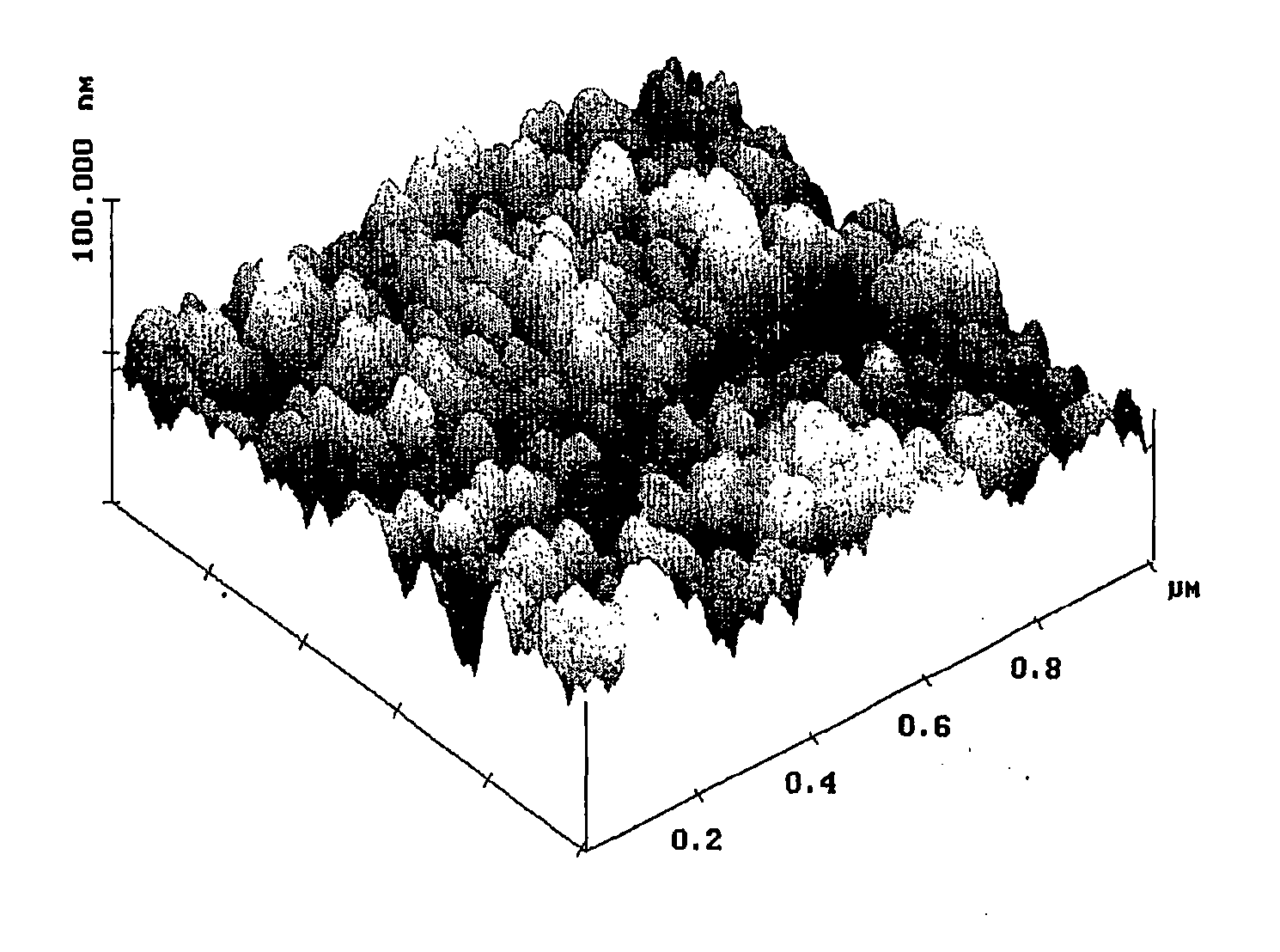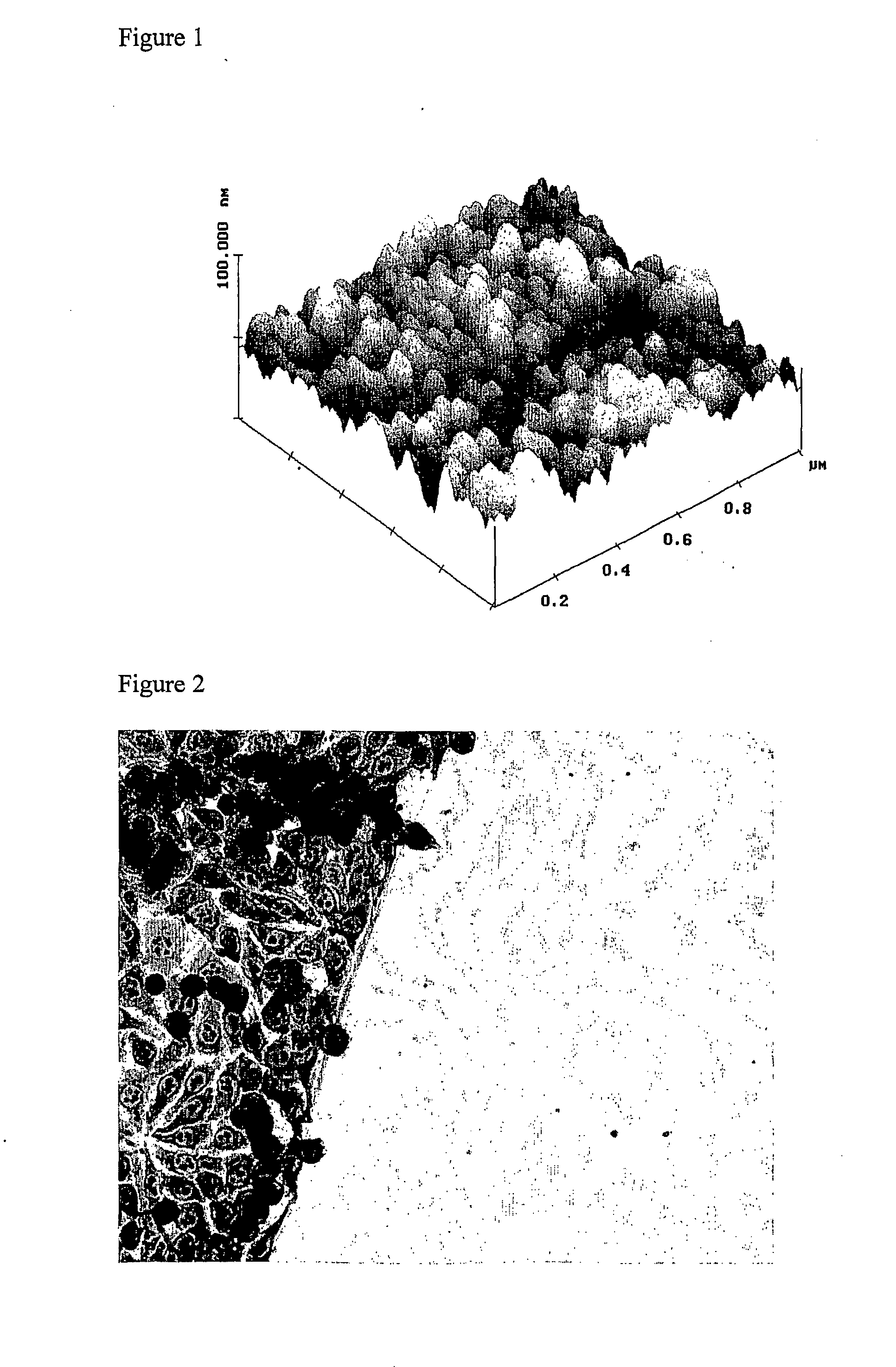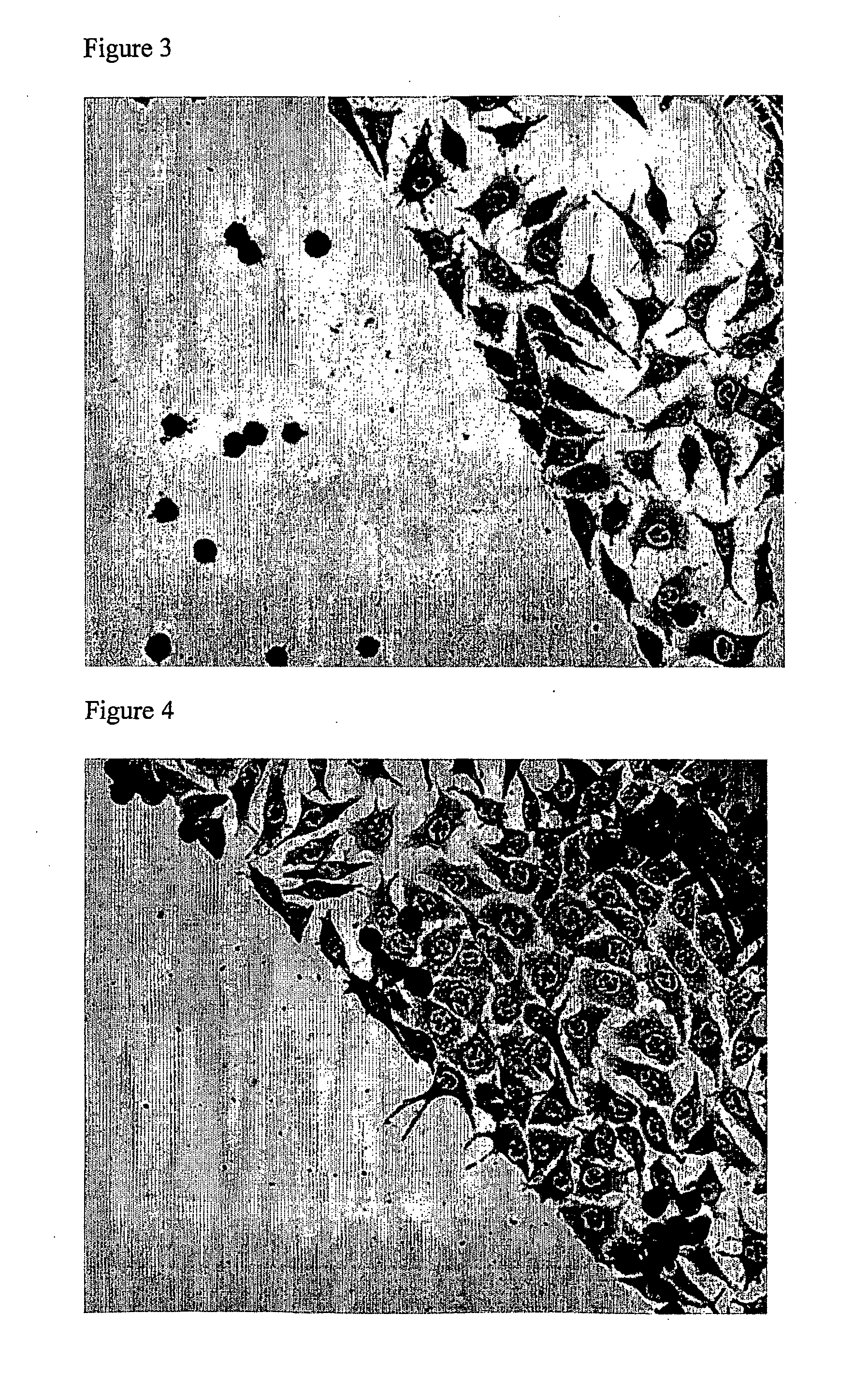Substrates
a substrate and substrate technology, applied in the field of substrates, can solve the problems of inability to manufacture reproducibly, limited commercial application suitability of many of the known substrates, and the tendency of the micro-structured surface layer to crack or peel, etc., to achieve the effect of preventing cell growth, reproducibility, and sufficient robustness
- Summary
- Abstract
- Description
- Claims
- Application Information
AI Technical Summary
Benefits of technology
Problems solved by technology
Method used
Image
Examples
example 1
[0093] Three 10×10×1 mm2 optically clear polystyrene (PS) squares are cut out from a plasma treated polystyrene culture dish. Each PS segment is then washed once with methanol followed by copious rinsing with deionized water (Millipore-Q 18.2 M). Each cleaned PS sample is then half immersed in an aqueous solution of 1 g L−1 polycationic polymer (Zetag)™ for approximately 15 minutes to allow for the development of a monolayer of polycationic polymer on the PS surface. The polycationic derived PS samples are then removed from the polymer solution and washed copiously with deionized water (Millipore-Q 18.2 M) to remove excess polycationic polymer. The coated portions of each PS sample are then immersed in three different aqueous dispersions of silica solution (Ludox TM-50; HS-40 and SM-30, ex. Dupont de Nemours & Co.) containing approximately 40% w / w silica particles of approximately 21, 14 and 7 nm diameter respectively. A further aqueous dispersion of silica solution is also used whi...
example 2
[0099] In order to assess the growth characteristics of different cells on the substrate, bovine lens epithelial cells are applied to the glass substrate partially coated with nano-particulate material.
[0100] Primary bovine lens epithelial cells are obtained from the Unit of Opthalmology, The University of Liverpool at second or third passage and maintained in Dulbecco's Minimal essential Medium supplemented with 10% foetal calf serum. A cell suspension is prepared at a cell concentration of approximately 5×104 cells / ml. 1 ml of this cell suspension is directly applied to both treated and untreated surface of a substrate prepared as described in Example 1. The cells are left in contact with the substrate for 30 minutes to allow cells adhesion, then the substrate is flooded with culture medium and maintained at 37° C. / 5% CO2 for 48 hours. After this time the culture medium and non-adherent cells are removed. The substrate is then treated with 100% methanol in order to fix the cells ...
example 3
[0103] PMMA and similar materials are often modified with an air glow discharge plasma in order to improve their wettability. Therefore an experiment will be conducted in order to assess the growth of fibroblast cells on a PMMA substrate which will be treated with an air plasma.
[0104] A suspension of clone L 929 mouse fibroblast established cell line is prepared from a culture maintained in Eagle's Minimum Essential medium with a 5% foetal calf serum supplement. The suspension is prepared at cell concentration of approximately 1×105 cell / ml. 1 ml of the cell suspension is directly applied to the surface of an air plasma treated polymethylmethacrylate substrate which is prepared according to a standard protocol. The cells are left in contact with the substrate for 30 minutes to allow cells adhesion, then the substrate is flooded with culture medium and maintained at 37° C. / 5% CO2 for 48 hours. After this time the culture medium and non-adherent cells are removed. The substrate is th...
PUM
| Property | Measurement | Unit |
|---|---|---|
| diameter | aaaaa | aaaaa |
| distances | aaaaa | aaaaa |
| distances | aaaaa | aaaaa |
Abstract
Description
Claims
Application Information
 Login to View More
Login to View More - R&D
- Intellectual Property
- Life Sciences
- Materials
- Tech Scout
- Unparalleled Data Quality
- Higher Quality Content
- 60% Fewer Hallucinations
Browse by: Latest US Patents, China's latest patents, Technical Efficacy Thesaurus, Application Domain, Technology Topic, Popular Technical Reports.
© 2025 PatSnap. All rights reserved.Legal|Privacy policy|Modern Slavery Act Transparency Statement|Sitemap|About US| Contact US: help@patsnap.com



